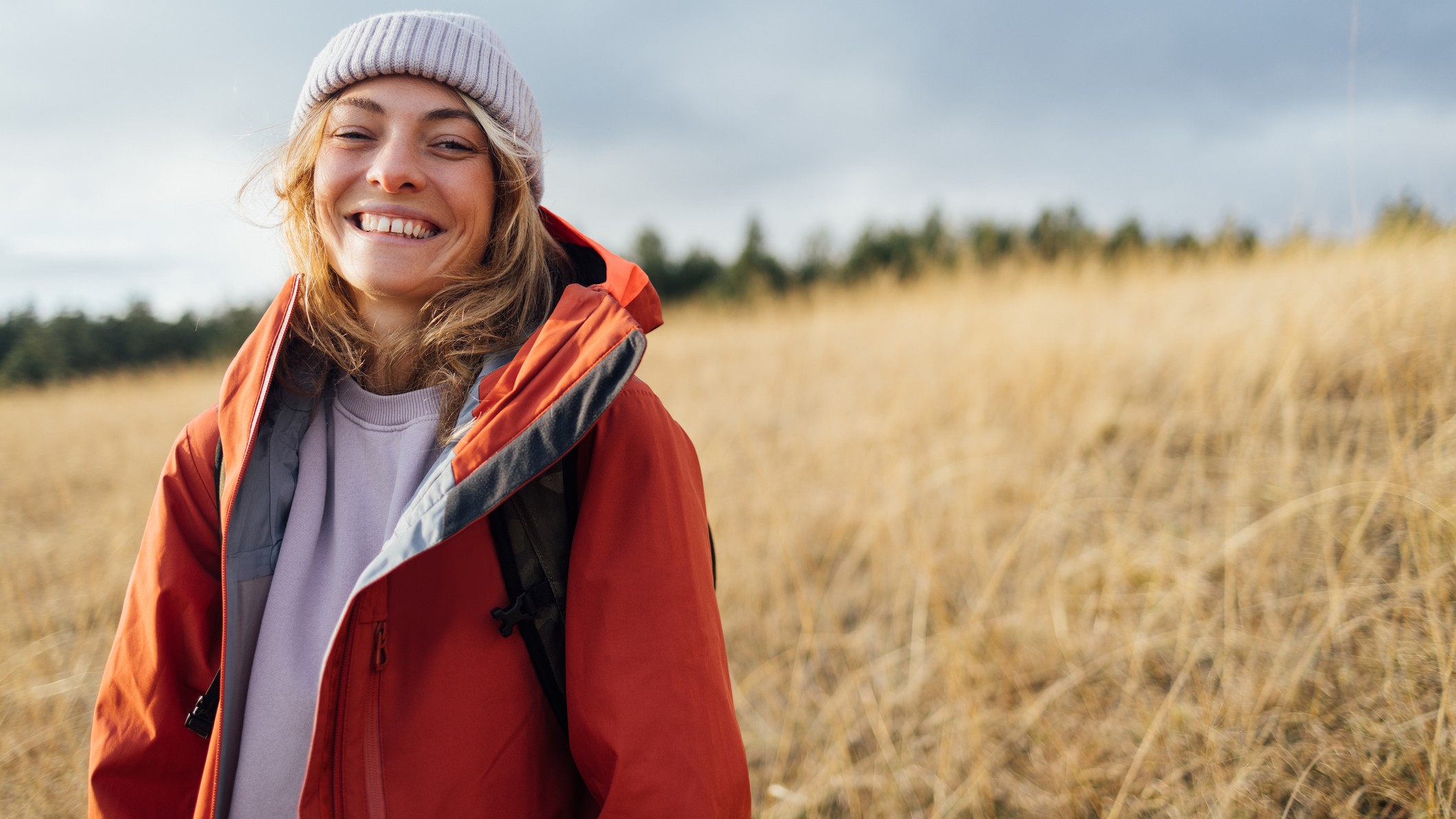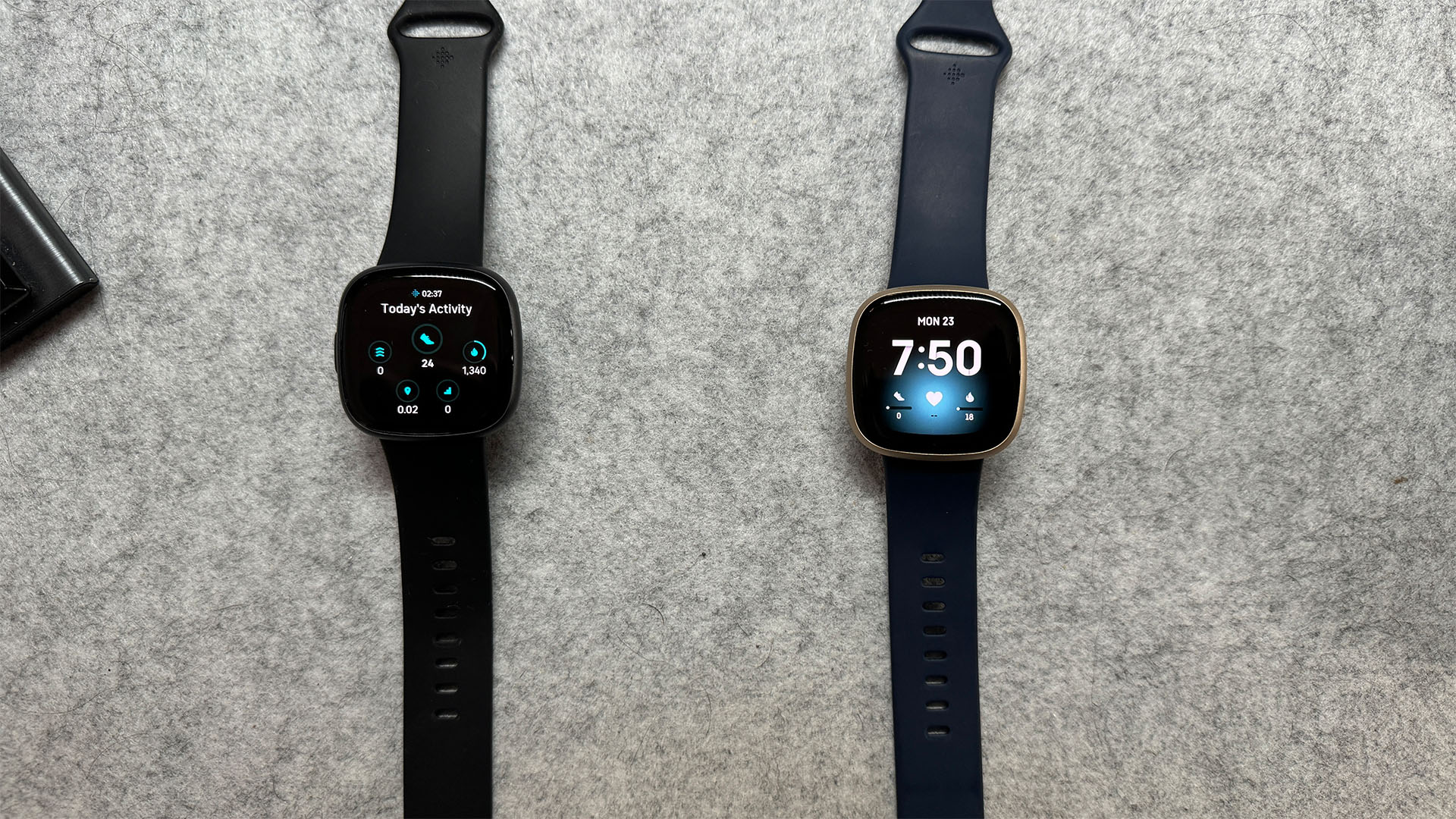Is walking cardio?
Is walking cardio – and how many steps should you do to improve your health and fitness?

Is walking cardio? It’s a question you might ask yourself if you loathe the idea of HIIT sessions and spin classes. While intense aerobic training is beneficial for our health and wellbeing, it can be exhausting and time-consuming – which is why you might turn to walking as your preferred cardio workout.
There are lots of benefits of walking; it can improve your joint health, boost your mood and even lead to healthier bones. It can also be done anywhere, at any time, and you don’t need a lot of expensive equipment to do it.
But is walking cardio? And can a short stroll provide the same health benefits as a sweaty bike ride? While walking is a form of cardio, there are lots of factors that affect its cardiovascular benefits. We’ll cut through some of the confusion, as well as answer how much walking you need to do to increase your fitness and improve your health.
If you’re ready to start getting your steps in, check out our guide to the best shoes for walking to keep your feet supported and comfortable.
Is walking cardio?
Cardio refers to any type of activity that increases heart rate and respiration by engaging large muscle groups in a repetitive and prolonged manner. Any low to moderate intensity exercise can be considered aerobic and you don't have to push your muscles to the brink of exhaustion to get a good cardio workout. So walking is an excellent example of cardiovascular training.
However, a leisurely walk is not going to benefit your health and fitness in the same way as a tough spin class or running a 10k. If you want to improve your endurance and reap the benefits of putting the steps in, you need to walk at a pace that significantly challenges your cardiovascular system. The key is to find a walking intensity that makes you slightly breathless but ensure a consistent walking pace throughout the entirety of your walk.

How much walking should you do?
Most major health institutions, including the World Health Organisation, agree that we should be getting at least 150 minutes of moderate intensity per week to minimise our risk of developing chronic diseases. The American Heart Association defines moderate exercise as that in which your heart rate stays between 50-70% of your maximum heart rate. As walking is considered to be in that category, you’ll have to walk for at least 2.5 hours each week.
Get the Fit&Well Newsletter
Start your week with achievable workout ideas, health tips and wellbeing advice in your inbox.
“Walking is a great way to get physical activity,” says Russ Jago, professor of physical activity and public health at the University of Bristol. “It is easy to add to your day and make important benefits in terms of preventing heart disease, reducing the risk of type 2 diabetes and improving mental health. Try to start small and build up slowly and add in throughout the day. It can be planned exercise or just a walk with a friend, trip to the shops.”

What are the benefits of walking?
Regular brisk walks can be highly beneficial for your health and wellbeing. Multiple studies have demonstrated that just by walking an additional 1000 steps per day you can increase your lifespan and significantly reduce your risk of suffering from cardiovascular disease, stroke and hypertension. What’s more, you don’t have to clock in more than 10,000 steps every day to experience such positive effects.
Walking also has a profound effect on our metabolism and body composition. Regular brisk strolls can not only improve blood flow, but also help with regulating blood lipids and cholesterol levels, as well as blood sugar levels. And if you’re wondering, can you lose weight by walking, the answer is yes! Evidence suggests that Nordic walking in particular (a style of walking that uses poles for a full body workout) is a fantastic tool to keep your weight under control.
There’s a strong link between walking and mental health. A systematic review found that, if you put the steps in, you are likely to experience better sleep, better mood and higher energy levels than those who don’t walk much. There’s even evidence to suggest that walking may help to alleviate menopause symptoms.

Walking on treadmill vs walking outside
Bad weather, poor street lighting and inappropriate clothing are just some of the barriers to engaging in outdoor physical activity. So hopping on a treadmill can be a good way to avoid battling with rainy conditions and hard pavements. But are there any differences between walking outside vs walking on a treadmill?
Walking outside definitely makes your body work harder and burns more calories. Outdoor conditions can also provide more challenging conditions such as wind resistance, uneven terrain or steps. Your body has to navigate through all these obstacles by engaging additional stabilising muscles to keep you more stable and balanced.
What’s more, outdoor strolls provide an additional boost to our mental and emotional health. Studies have shown that exercising in nature is associated with less stress, less anxiety and better emotional well-being than any other indoor activities.
However, treadmills have some benefits too. While walking outdoors can come with unpredictable challenges, indoor walks allow more peace and control over your workout. Many of the best treadmills are equipped with a range of pre-programmed training routines and a digital screen that displays vital stats, such as heart rate, average speed or distance walked. Receiving such feedback can greatly help with improving your exercise performance.
When you exercise in the comfort of your own home, you can easily entertain yourself too – it’s fairly easy to listen to music, watch TV or even read a book whilst walking on a treadmill. The same can’t be said for a stroll in the park!

Is walking better than running?
Walking and running may be two different activities, but studies suggest they have a similar effect when it comes to reducing your risk of developing high blood pressure, high cholesterol or type 2 diabetes. Although, you still need to spend more time walking to achieve the same benefits as you would get from running.
Walking is a better option if you struggle with injuries, joint pains or muscle weakness. Running involves more impact force that can really test the health of your knees and ankles, whilst walking is generally easier on your body. It can also be quite a technical activity, so you may need to reach out to professional coaches for tips and advice on how to start running. Whereas beginners will find walking a fairly easy activity to begin their fitness journey with.
Is walking cardio? The verdict
Walking is a great leisure activity that can benefit both your physical and mental health. It’s a very affordable and accessible form of physical activity that anyone, anywhere, at any time can do. Even if you’re a passionate runner or a weightlifter, you can still consider walking as a great form of light exercise to engage in during your recovery days.
You can find some of the best walking shoes on sale to get you started and learn how to choose walking shoes to keep you comfortable while you stroll.

Anna Gora is a Health Writer for Future Plc, working across Coach, Fit&Well, LiveScience, T3, TechRadar and Tom's Guide. She is a certified personal trainer, nutritionist and health coach with nearly 10 years of professional experience. Anna holds a BSc degree in Nutrition from the Warsaw University of Life Sciences, a Master’s degree in Nutrition, Physical Activity & Public Health from the University of Bristol, as well as various health coaching certificates. She is passionate about empowering people to live a healthy lifestyle and promoting the benefits of a plant-based diet.
-
 This is the exact running plan I followed for two months to finally get my 5K run time under 30 minutes
This is the exact running plan I followed for two months to finally get my 5K run time under 30 minutesAnd it helped me fall in love with running again
By Ruth Gaukrodger Published
-
 I increased my step count back to 10,000 a day after time off—here’s how I did it sustainably
I increased my step count back to 10,000 a day after time off—here’s how I did it sustainablyIt took me five weeks to get back to the ideal range
By Lou Mudge Published
-
 What’s the best open water swimming technique?
What’s the best open water swimming technique?Fitness Perfect your open water swimming technique and you'll be able to explore your local lakes and pools with confidence
By Maddy Biddulph Published
-
 The best trekking poles 2025
The best trekking poles 2025Buying guide Protect your knees and increase stability with the best trekking poles
By Harry Bullmore Published
-
 Fitbit Versa 3 vs Versa 4: here's the one I recommend buying
Fitbit Versa 3 vs Versa 4: here's the one I recommend buyingVersus There's little difference between these models, but the Versa 3 is much cheaper
By Lloyd Coombes Last updated
-
 Best elliptical machines for home workouts
Best elliptical machines for home workoutsBuying guide Need a low-impact workout that’s easy on the knees? Try one of the best elliptical machines
By Sam Hopes Last updated
-
 Best foam rollers for soothing sore muscles
Best foam rollers for soothing sore musclesBuying Guide Ease post-workout pain with our pick of the best foam rollers
By Harry Bullmore Last updated
-
 The JAXJOX DumbbellConnects have changed my home workouts forever
The JAXJOX DumbbellConnects have changed my home workouts foreverIf you want to start strength training at home, the JAXJOX DumbbellConnect adjustable dumbbells are the ultimate home workout tool
By Harry Bullmore Published
-
 How to go walking with weights to build muscle
How to go walking with weights to build muscleFitness Try working out outside and go walking with weights for some serious health benefits
By Harry Bullmore Published
-
 Does hiking build muscle?
Does hiking build muscle?Fitness Does hiking build muscle? Here’s how this outdoor activity affects your strength
By Lily Canter Published